Location of charging socket
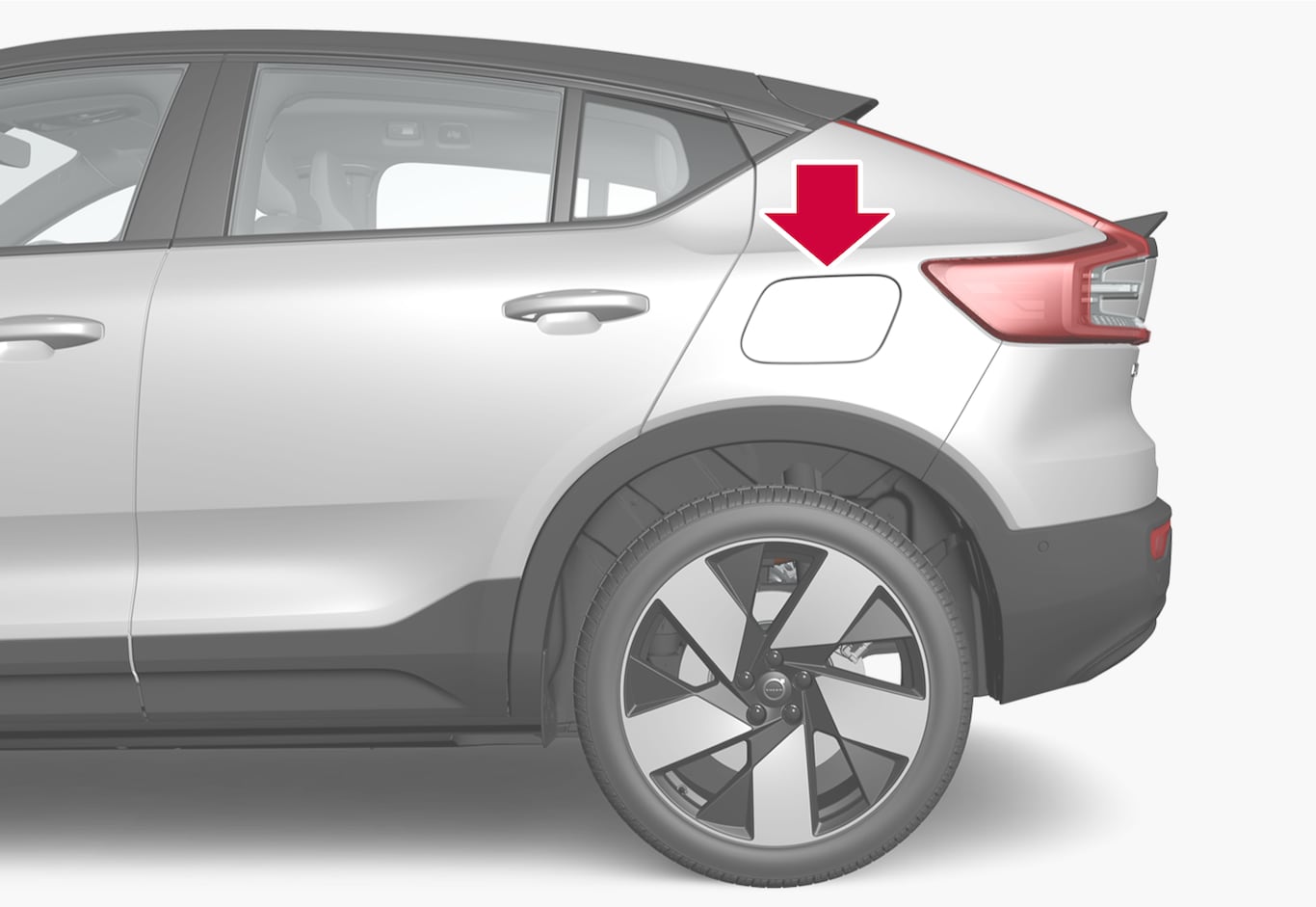
Charging via charging station (mode 3)1
Pull out the cable from the charging station's storage socket or take out the charging cable. Note that the ignition must be switched off completely before charging.
Plug the charging cable into the charging station. If the charging station has a permanent charging cable, proceed to step 3.
Important
Do not plug in the charging cable if there is a risk of thunder or lightning.
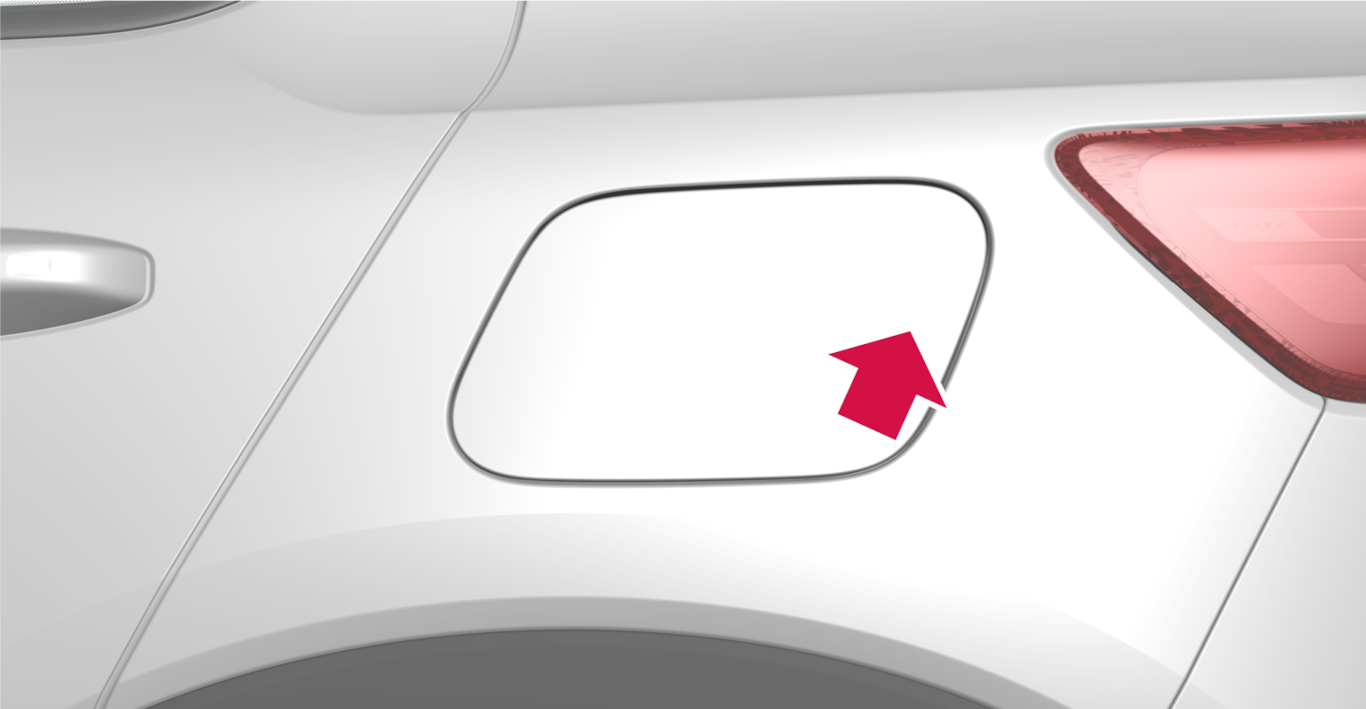
Press the rear edge of the charger door to open the charging socket2.
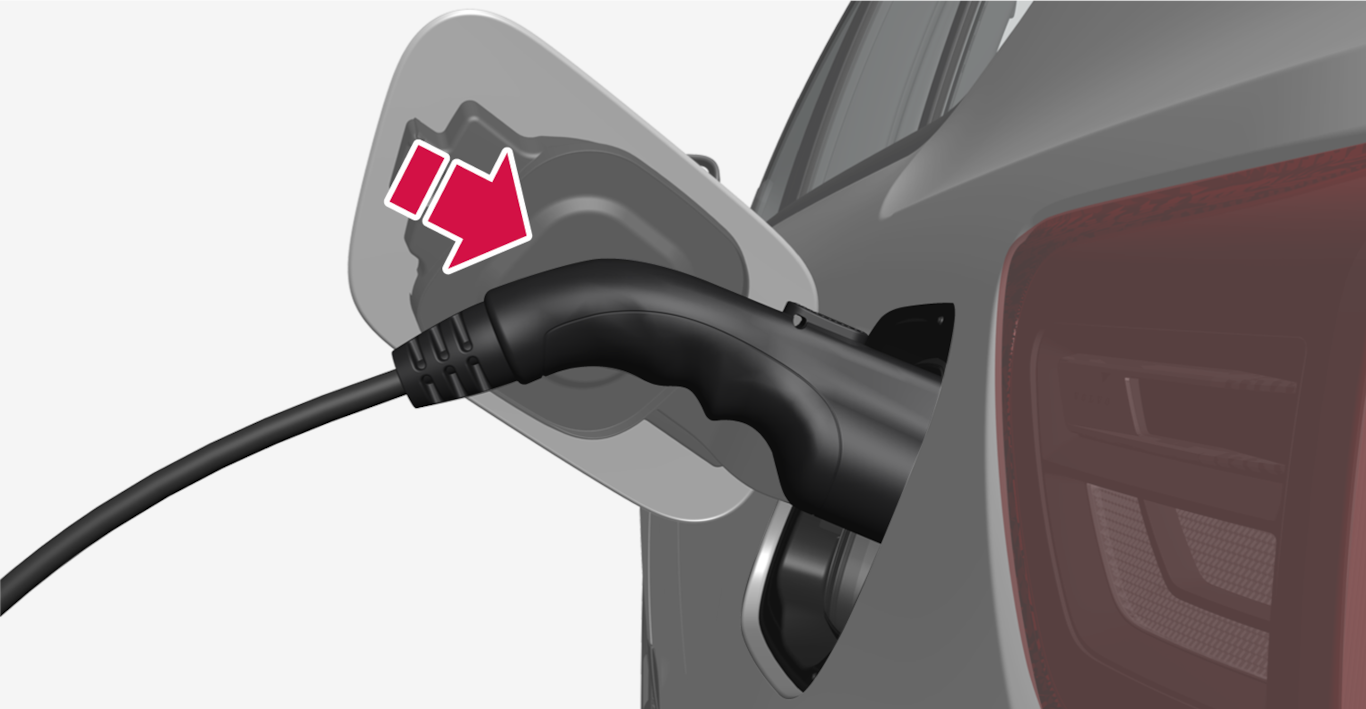
Remove the charging handle's protective cover and push the charging handle all the way into the charging socket.
Important
To prevent paintwork damage, e.g. in strong winds, position the protective cover of the charging handle so that it does not touch the vehicle.
The charging cable handle will lock into place and charging will begin within 5 seconds.
When charging starts, the green LED light in the charging socket will begin to flash.
The approximate remaining charging time or the charging status will be displayed in the instrument panel and center display.
During charging, condensation from the air conditioning may form under the vehicle. This is due to cooling of the high-voltage battery.
Warning
- Children should be supervised when in the vicinity of the charging cable when it is plugged in.
- High voltage is present in your electric meter housing and power distribution service panel. Contact with high voltage can cause death or serious personal injury.
- Do not use the charging cable if it is damaged in any way. A damaged or malfunctioning charging cable may only be repaired by a workshop – an authorized Volvo workshop is recommended.
- Always position the charging cable so that it will not be driven over, stepped on, tripped over or otherwise damaged, or cause personal injury.
- Do not use one or more adapters between the charging cable and the electric outlet.
- Never connect adapters of any kind between the charging cable and the vehicle.
Also, refer to the manufacturer's instructions for using the charging cable and its components.
Important
Do not wash the vehicle while the charging cable is plugged in or the charging door is open.
Rapid charging (direct current)
Remove the charging cable from the charging station's storage socket. Note that the ignition must be switched off completely before charging.
Open the charger door and remove the charging socket's protective cover.
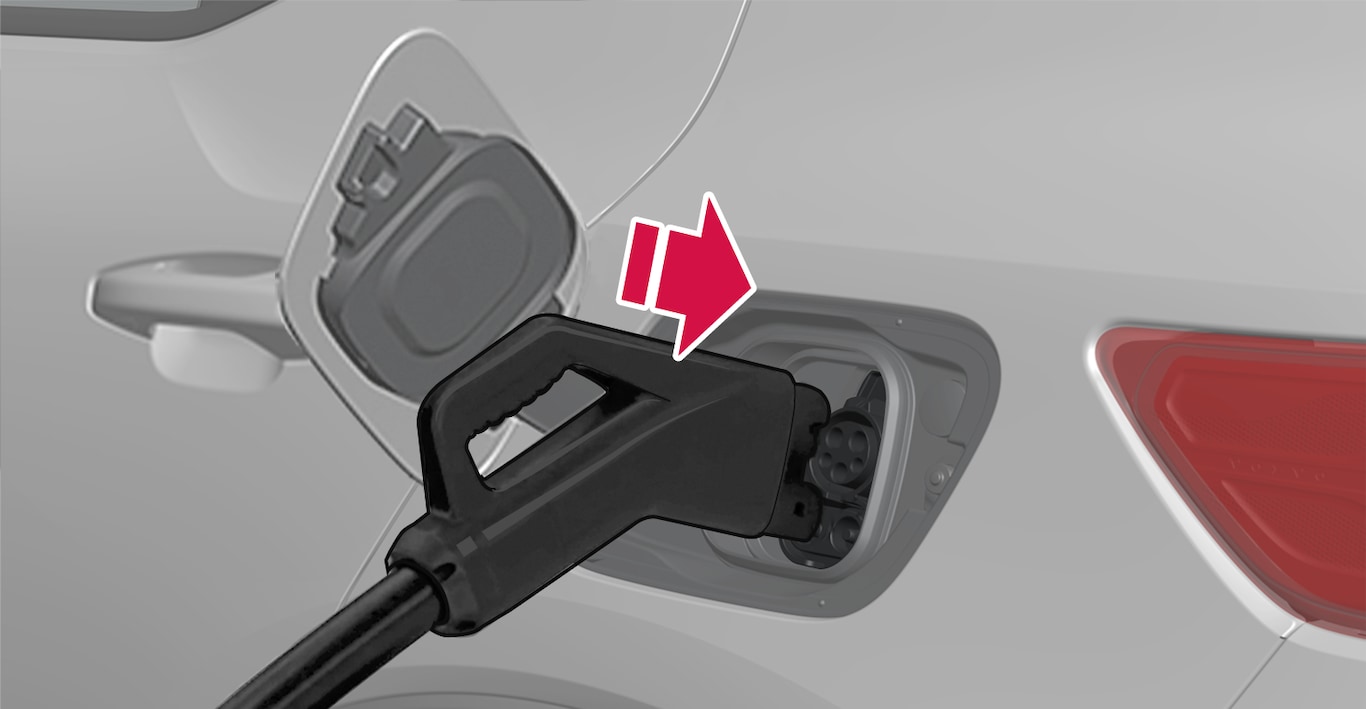
Grasp the charging cable with both hands and push the charging cable all the way into the vehicle's charging socket. Hold the charging handle up for a few seconds. The charging cable automatically locks into the charging socket after a few seconds. Make sure that the charging cable locks fully into place so that charging can start.
Follow the instructions in the charging station's user interface to authorize the charging. Charging will begin after the charging station completes an insulation test. This may take a minute or so.
When charging starts, the green LED light in the charging socket will begin to flash. The approximate remaining charging time or the charging status will be displayed in the instrument panel and center display.
Note
Charging stations supporting CCS are usually clearly marked CCS or Combo.
Decal on inside of charger cover
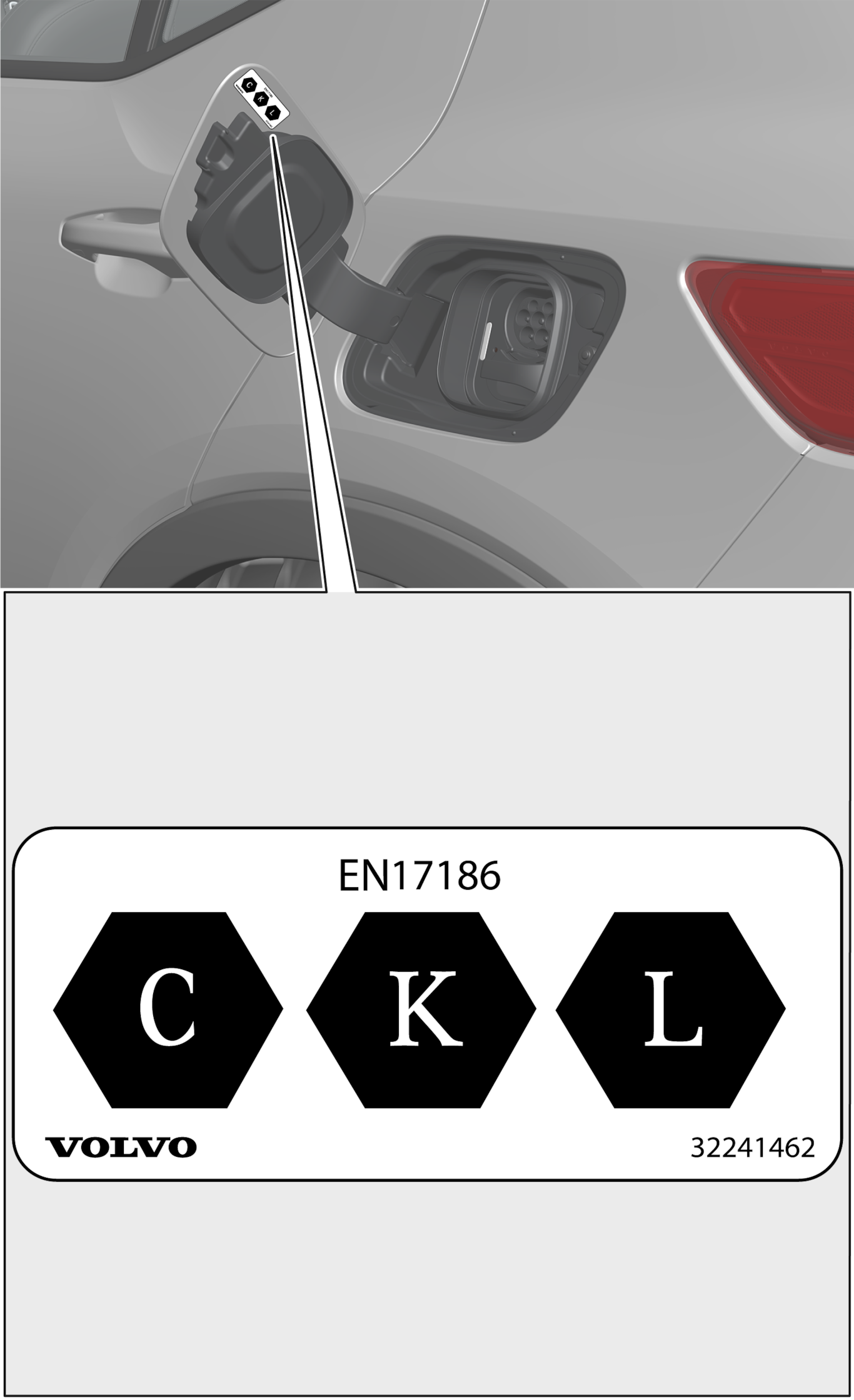
CEN standard EN 17186 identifiers are shown on the inside of the charger cover.
- C: Type 2 charging with alternating current (AC)
- K and L: Charging with direct current (DC), including Combined Charging System (CCS)